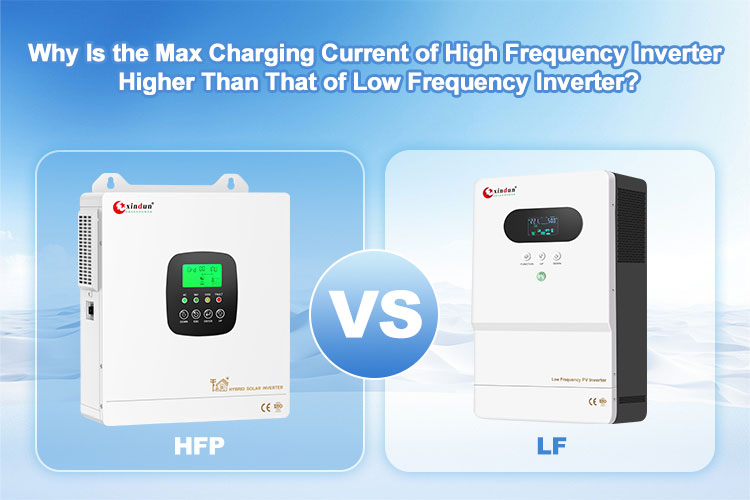
When we choose an inverter, have you found that the maximum charging current of high frequency inverter is 80amp or even 200amp, while the maximum charging current of low frequency inverter is only 20-35amp? Why is there such a difference?

Let's start with the design structure of the two inverters:
The main feature of low frequency inverter is that it has a powerful transformer. Through this transformer, the low frequency inverter can resist the sudden impact of high voltage and high current. No matter how unstable the input power source is, it always passes through the above transformer to first transmit the input power to the battery - charging the battery, then reversely discharging the battery, and finally providing a stable output AC power. From this, it can be seen that the low frequency inverter mainly charges the battery through the transformer. When the transformer is working, it often takes on the task of charging and discharging the battery at the same time. Therefore, it is not suitable for the transformer to charge the battery at full power. It is generally recommended to charge the battery with a quarter of the total power of the transformer. Therefore, the current that low frequency inverter can charge the battery with can only be one fourth of the inverter's max output power.
Compare this with high frequency inverter: After receiving AC power input from the mains, the high frequency inverter directly inverts 220vdc DC based on 220vac (refer to the local mains voltage for details), and then charges the battery by stepping down the voltage to a voltage suitable for the battery. This process is very direct, which is equivalent to charging the battery with most of the mains power connected, so the current that the high frequency inverter charges the battery can obtain a high current value.
So can we conclude that high frequency inverters are more suitable for home use? In fact, in addition to considering the speed of charging the battery, we also need to consider whether the local mains voltage is stable. Low frequency inverters have outstanding advantages in areas where the mains input is unstable. High frequency inverters have high operating efficiency and are also popular among home users.
It is like you are driving a car. If you want the car to drive more stably, you can only reduce the speed (choose low frequency inverter). If you want to enjoy the experience brought by speed, you should appropriately sacrifice driving stability (choose high frequency inverter).
We can choose the right inverter according to our actual needs. Xindun Power, as a 20 year professional inverter manufacturer, has a complete product line of high frequency inverters and low frequency inverters. We can provide you with high quality off grid inverters. We welcome global distributors, wholesalers and project developers to cooperate with us.